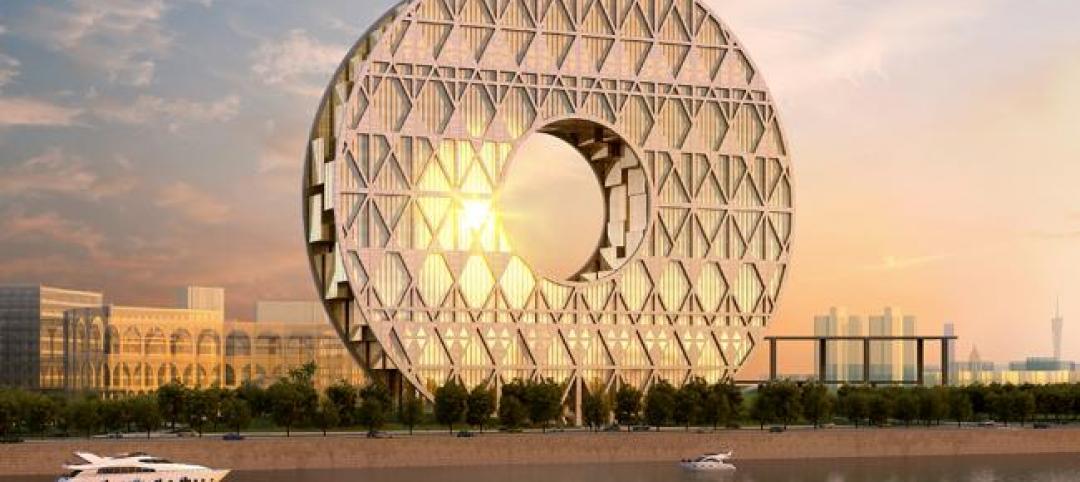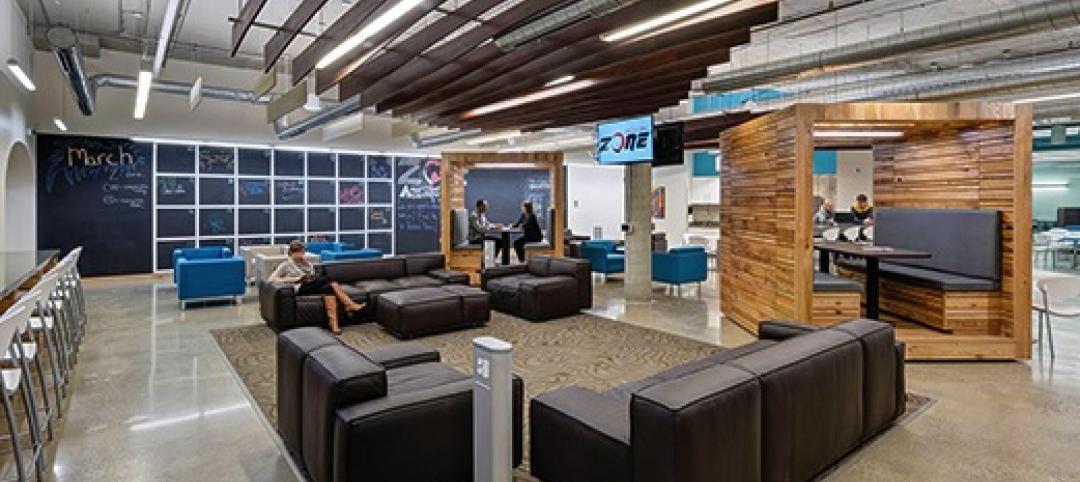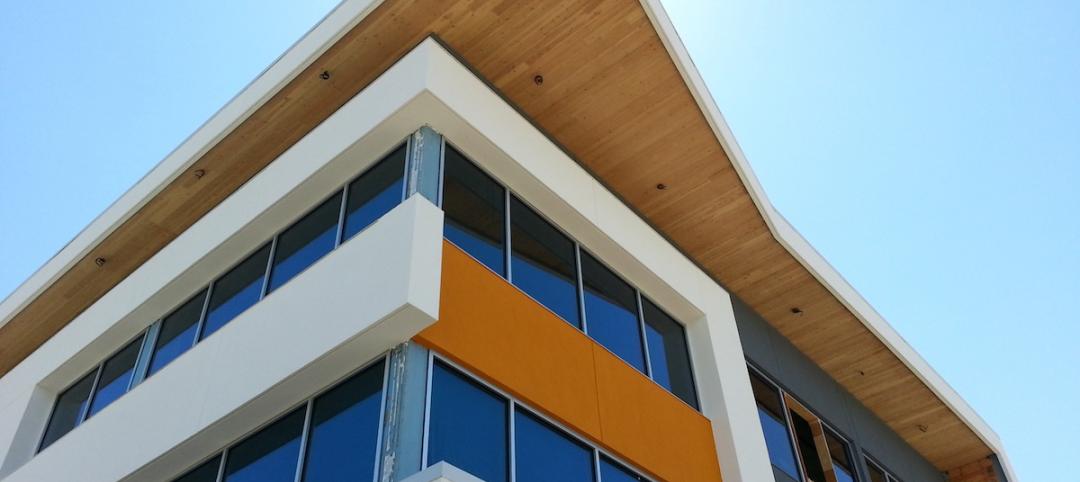Heineken USA’s headquarters at 360 Hamilton Avenue in White Plains, N.Y. consolidates Heineken offices from two other locations into one, primary location.
Spector Group, the primary interior architect for the redesign focused on two main improvements with the redesign: the expansion of the company’s bar and social zones and the enhancement and densification of the existing 60,000-sf bi-level space. “Creating an open and collaborative environment was our primary goal for Heineken’s new office design,” says Scott Spector, AIA, a Principal of Spector Group, in a release.
Employees and guests enter the building and are immediately greeted with a palette of simple raw materials. These materials are offset by modern design elements located throughout the expansive bar, “insperience” hub, and reception area. Large interactive screens and the experiential bar design highlight Heineken’s innovative company culture.
As part of creating a new open work style, the dedicated office spaces were converted to meeting and team rooms. A centrally located café is meant to increase the sense of community among employees. Platforms at the base of the intercommunicating stairway, which was altered to make it more open, provide casual breakout spaces.
The completed headquarters redesign, according to Ron Siesser, Senior Director of Human Resources, Heineken, USA, reflects the company’s “commitment to being a social, communal, and, most important, fun portfolio of brands.”
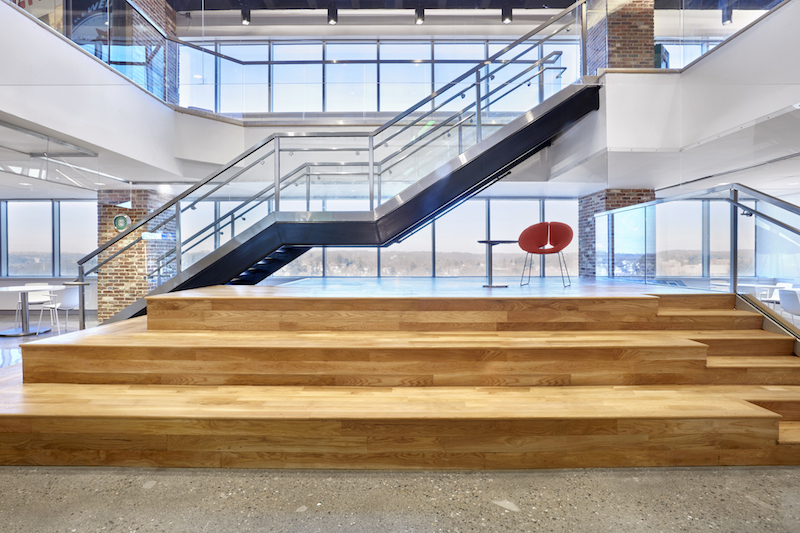 Photo: Garrett Rowland
Photo: Garrett Rowland
 Photo: Garrett Rowland
Photo: Garrett Rowland
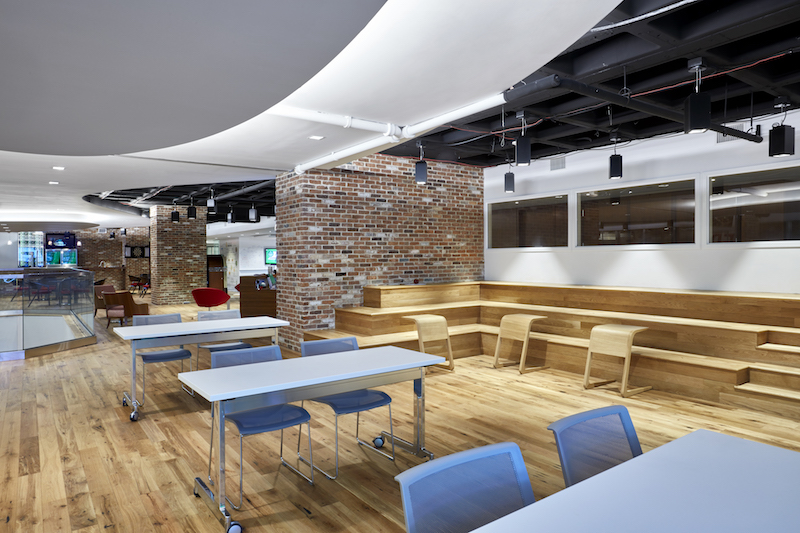 Photo: Garrett Rowland
Photo: Garrett Rowland
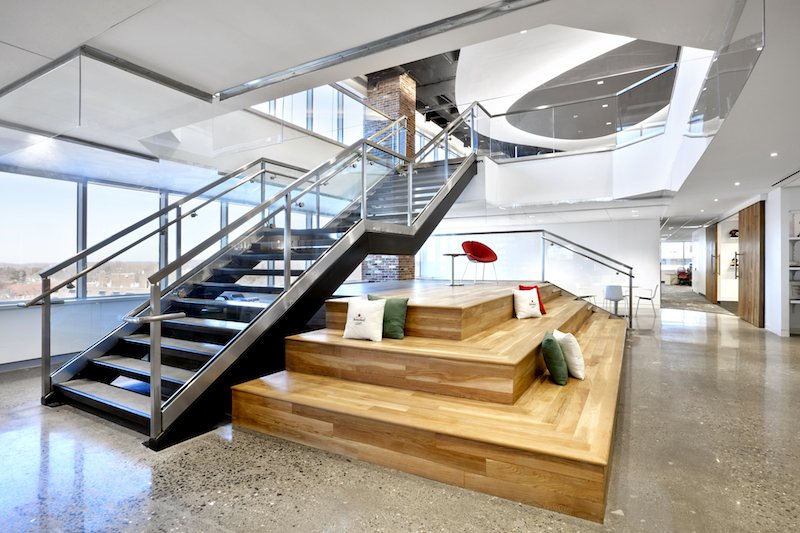 Photo: Garrett Rowland
Photo: Garrett Rowland
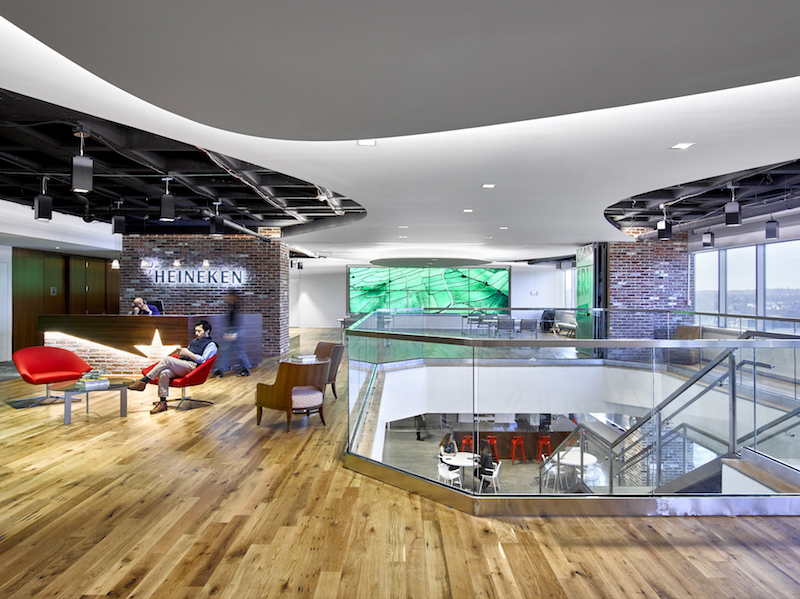 Photo: Garrett Rowland
Photo: Garrett Rowland
Related Stories
Sponsored | | Oct 23, 2014
From slots to public safety: Abandoned Detroit casino transformed into LEED-certified public safety headquarters
First constructed as an office for the Internal Revenue Service, the city's new public safety headquarters had more recently served as a temporary home for the MGM Casino. SPONSORED CONTENT
| Oct 23, 2014
China's 'weird' buildings: President Xi Jinping wants no more of them
During a literary symposium in Beijing, Chinese President Xi Jinping urged architects, authors, actors, and other artists to produce work with "artistic and moral value."
| Oct 22, 2014
Customization is the key in tomorrow's workplace
The importance of mobility, flexibility, and sustainability in the world of corporate design are already well-established. A newer trend that’s gaining deserved attention is customizability, and how it will look in the coming years, writes GS&P's Leith Oatman.
| Oct 16, 2014
Perkins+Will white paper examines alternatives to flame retardant building materials
The white paper includes a list of 193 flame retardants, including 29 discovered in building and household products, 50 found in the indoor environment, and 33 in human blood, milk, and tissues.
| Oct 15, 2014
Harvard launches ‘design-centric’ center for green buildings and cities
The impetus behind Harvard's Center for Green Buildings and Cities is what the design school’s dean, Mohsen Mostafavi, describes as a “rapidly urbanizing global economy,” in which cities are building new structures “on a massive scale.”
| Oct 14, 2014
Proven 6-step approach to treating historic windows
This course provides step-by-step prescriptive advice to architects, engineers, and contractors on when it makes sense to repair or rehabilitate existing windows, and when they should advise their building owner clients to consider replacement.
| Oct 13, 2014
The mindful workplace: How employees can manage stress at the office
I have spent the last several months writing about healthy workplaces. My research lately has focused on stress—how we get stressed and ways to manage it through meditation and other mindful practices, writes HOK's Leigh Stringer.
Sponsored | | Oct 13, 2014
CLT, glulam deliver strength, low profile, and aesthetics for B.C. office building
When he set out to design his company’s new headquarters building on Lakeshore Road in scenic Kelowna, B.C., Tim McLennan of Faction Projects knew quickly that cross-laminated timber was an ideal material.
| Oct 12, 2014
AIA 2030 commitment: Five years on, are we any closer to net-zero?
This year marks the fifth anniversary of the American Institute of Architects’ effort to have architecture firms voluntarily pledge net-zero energy design for all their buildings by 2030.
| Oct 9, 2014
Regulations, demand will accelerate revenue from zero energy buildings, according to study
A new study by Navigant Research projects that public- and private-sector efforts to lower the carbon footprint of new and renovated commercial and residential structures will boost the annual revenue generated by commercial and residential zero energy buildings over the next 20 years by 122.5%, to $1.4 trillion.




